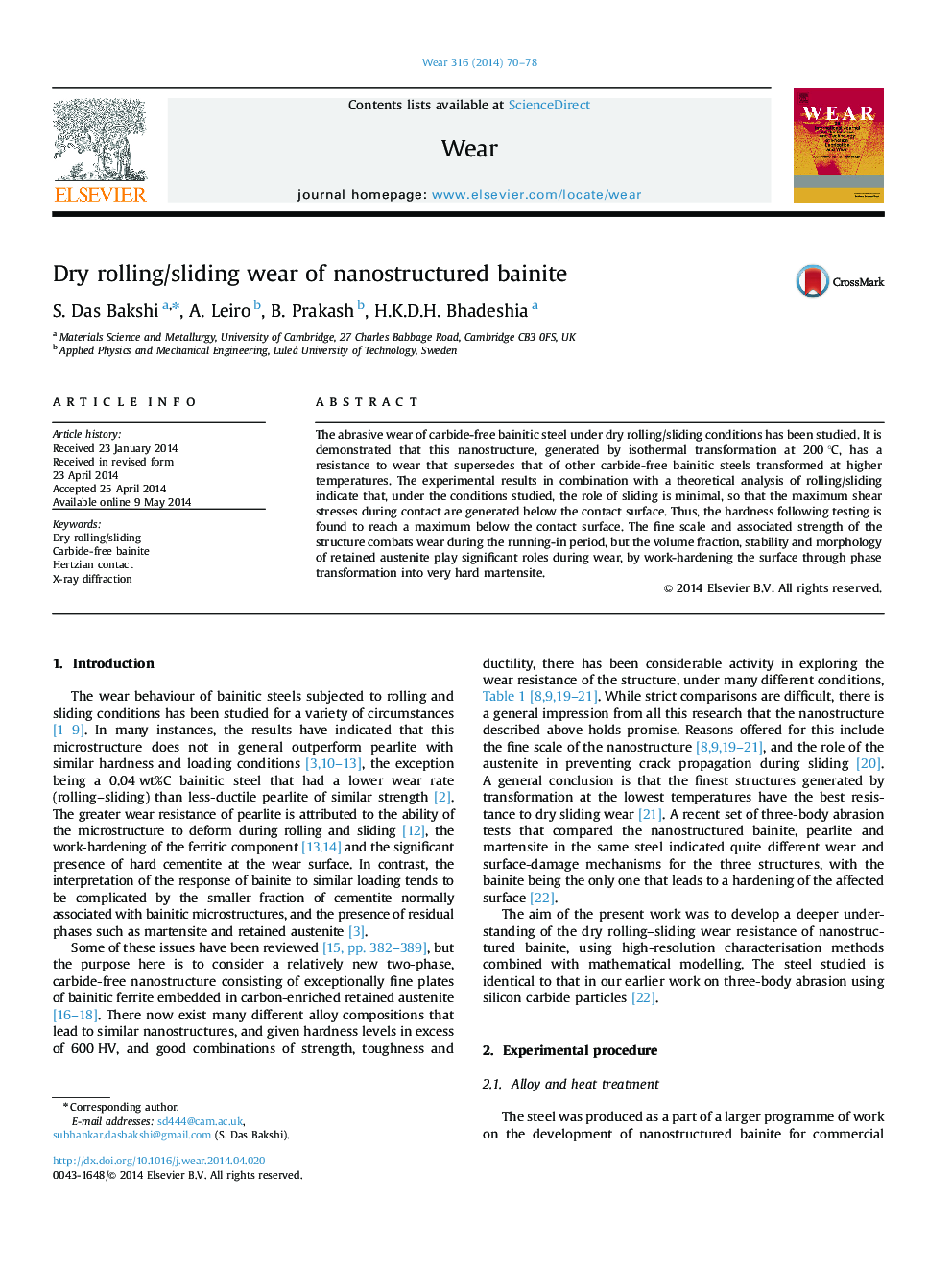| Article ID | Journal | Published Year | Pages | File Type |
|---|---|---|---|---|
| 617383 | Wear | 2014 | 9 Pages |
•Abrasive wear of nanostructured bainite during rolling/sliding has been studied.•Specific wear rate observed is much lower than other carbide-free bainitic steels of comparable hardness.•Limited transformation of thin film austenite to fine scale martensite observed, leading to sub-surface hardening.•Fine scale and stability of retained austenite contribute to improve wear resistance.
The abrasive wear of carbide-free bainitic steel under dry rolling/sliding conditions has been studied. It is demonstrated that this nanostructure, generated by isothermal transformation at 200 °C, has a resistance to wear that supersedes that of other carbide-free bainitic steels transformed at higher temperatures. The experimental results in combination with a theoretical analysis of rolling/sliding indicate that, under the conditions studied, the role of sliding is minimal, so that the maximum shear stresses during contact are generated below the contact surface. Thus, the hardness following testing is found to reach a maximum below the contact surface. The fine scale and associated strength of the structure combats wear during the running-in period, but the volume fraction, stability and morphology of retained austenite play significant roles during wear, by work-hardening the surface through phase transformation into very hard martensite.
